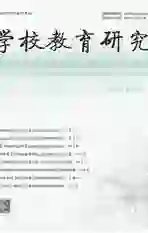现代英汉女性社交称谓语对比分析
2018-05-21吴奕琳
吴奕琳
Chinese and English modern feminine social appellations have some similarities, but at the same time they show a lot of differences due to the huge cultural and social differences.
The two systems have much common in the broad sense. They are divided into subgroup in a similar manner. Communication appellations, relation appellations, post and rank appellations, honorifics, affectionate appellations are all found in two languages.
Firstly, the two modern feminine social appellation systems share the same social functions. As an important of the social etiquette, the modern feminine social appellation system may maintain, strengthen and even establish the interpersonal relationship. By the modern feminine social appellation system, both parties involved confirm their identities, status, social distance and roles in the society.
Secondly, some terms such as address terms of endearment, post and rank appelations have the similarities in the usage. Concerning post and ranks, the two languages have many common points especially in the usage of academic titles. In English, academic titles are often used to address a teacher who is the professor or a doctor in a certain department or college. These titles may be used alone or together with surnames. But the titles, for example, lecturer, master, or bachelor cannot be used as appellations. In China, we also use the same academic titles to address people.
Thirdly, the two modern feminine social appellation systems have similar classification. They are classified into subgroup in a similar manner. In English when the condition is ambiguous or when the names of addressee are unknown, speakers may avoid using any names at all.
Moreover, the two modern feminine social appellation systems have some specific points in common.
First of all, the three commonly used popular feminine social appellations “Miss”, and “Mrs.” had great impact in China before liberation in 1949. And since Chinas reform and opening to the outside world, these feminine social appellations are gradually accepted by Chinese people.
The huge culture differences between Chinese and English are, to an extent, reflected in address term. The larger the differences in the cultural backgrounds and social structure are, the larger the differences in address terms will be.
The differences lie mainly in the following aspects:
In China, the mostly used popular modern feminine social appellations include: “Nushi 女士”(Madam), “taitai 太太”(Mrs)and so on. These words can be used to indicate sex and marital status(on the part of women address) “Nushi 女士” can be used with the last name(LN) or the full name(Full N). “Taitai 太太” can be used together with the last name . And “xiaojie 小姐” can be used alone or together with the last name, the first name, the full name. Sometimes they can be used together with titles to form compound modern feminine social appellations.
In English,the popular modern feminine social appellations are “Madam”, “Miss”, “Mrs.”, “Ms.” and “Madam” is always used alone to show a relation that is not intimate. “Miss” is always used for the unmarried female. The most widely used address form is Mrs., “Ms and Miss+ last name” such as “Mrs. Jenny” and “Ms. Brown” Mrs. Brown.” is only used for the married female while “Miss” is for the unmarried female or those divorced and single regardless of her age. Those who are over 82 can be also called “Miss” as long as she is single. The feminist movement in the West created a new term “Ms.” which can be applied to any female regardless of her marital status, but it isnt as popular as “Miss”, “Mrs.”
Both English and Chinese use certain modern feminine social appellations to express intimate feelings between people. Because of the cultural differences, Chinese addressing behavior is much more complicated than that of English. In order to show intimacy, Chinese people often like to use first name, nickname or some unique terms during the conversation.
Native English speakers use first name, nicknames or words of endearment to show intimacy. In the west, first name doesnt necessarily indicate intimacy, but merely a sign for solidarity. In addition, they dont use “Lao 老” or “Xiao 小” to convey the meaning of familiarity.
By a comparative study, this thesis is supposed to provide a comprehensive description of the similarities and differences of modern feminine social appellations between Chinese and English; and explores the deep reason which causes the similarities and differences of modern feminine social appellations between Chinese and English.
